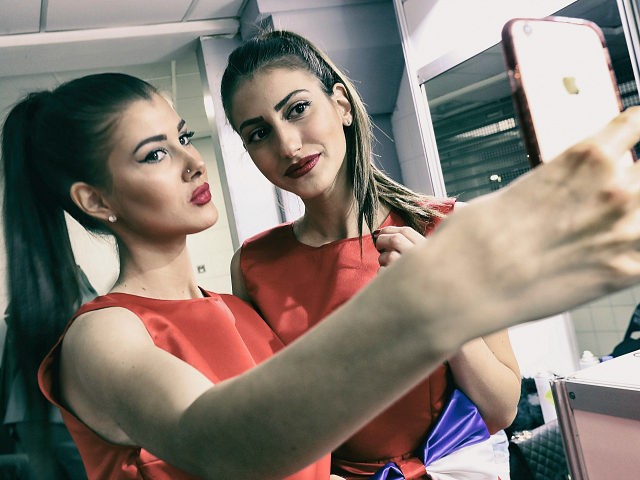The new frontier of self-image problems is being driven by unattainable filtered “selfies” taken with smartphone apps.
In a paper titled “Selfies—Living in the Era of Filtered Photographs,” Susruthi Rajanala and her colleagues outline how Snapchat’s tendency toward “blurring the line of reality and fantasy” is driving people toward the internal torture of Body Dysmorphic Disorder (BDD) in increasing numbers.
The paper describes BDD as “an excessive preoccupation with a perceived flaw in appearance, classified on the obsessive-compulsive spectrum.” According to the researchers:
The disorder is more than an insecurity or a lack of confidence. Those with BDD often go to great lengths to hide their imperfections, engage in repetitive behaviors like skin picking or grooming, and may visit dermatologists or plastic surgeons frequently, hoping to change their appearance.
In 2017, The American Academy of Facial Plastic and Reconstructive Surgery found that a whopping 55 percent of surgeons said that patients were coming in so they could look better in their selfies. According to The Washington Post, that represents a 13 percent increase in just one year.
Patients are trying to make themselves look more like the way they are extensively filtered to appear in mobile apps like Snapchat, but in most cases that is literally physically impossible. “Sometimes I have patients who say, ‘I want every single spot gone and I want it gone by this week or I want it gone tomorrow,’ because that’s what this filtered photograph gave them,” said Bostin University professor of dermatology Neelam Vashi.
In a 2013 TEDx talk, Northwestern University psychology professor Renee Engeln summarized the problem and its core, saying, “Our sense of what’s real, what’s possible when it comes to beauty, is warped by our overexposure to these images. Instead of seeing them for what they are, which is extraordinarily rare, we start to see them as typical or average.”
She continued, “When you are beauty sick, you cannot engage with the world, because between you and the world is a mirror. It’s a mirror that travels with you everywhere. You can’t seem to put it down.”

COMMENTS
Please let us know if you're having issues with commenting.